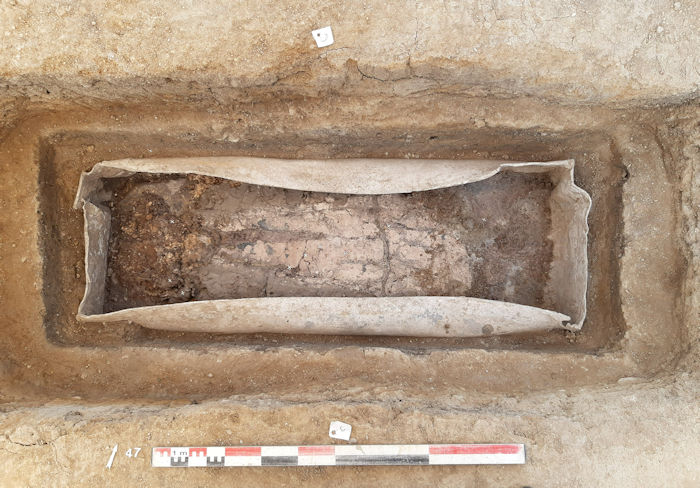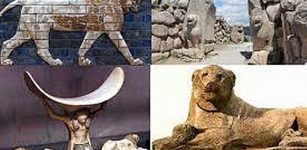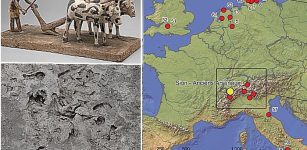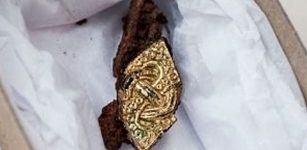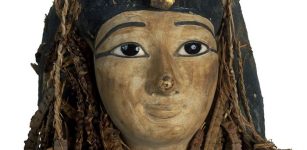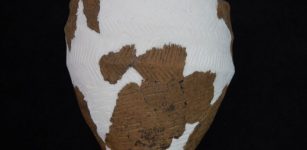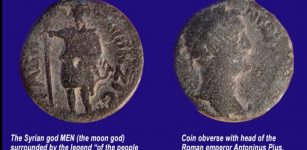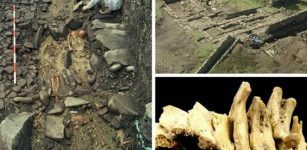Unique Ancient Gold Cloth Found In The Necropolis Of Saint-Pierre-l’Estrier Is The Largest Antique Piece Found To Date
Conny Waters - AncientPages.com - When archaeologists excavated the necropolis of Saint-Pierre-l'Estrier, France, they unearthed more than 230 graves.
Inside these tombs, Inrap archaeologists found many exceptional objects. Among them were gold jewelry, jet and amber pins, and an outstanding diatrete vase. One of the tombs, a lead coffin dated to the 4th century, contained the remains of a large cloth tinted purple and woven with gold threads.
Tomb 47 and its lead coffin filled on about fifteen centimeters of earth before removing the clods containing the gold fabric. © Carole Fossurier, Inrap
Scientists are conducting laboratory analyses of the gold fabric, but a fragment of the cloth was presented to the public during the exhibition "From one world to another, Augustodunum from Antiquity to the Middle Ages."
The necropolis of Saint-Pierre-l'Estrier was used from the beginning of the 3rd century until the middle of the 5th century. Most of the tombs at the site are from the 4th century .century. Among the deceased were probably the first Autunois Christians (the ancient texts mention that the first bishops of Autun were buried in this vast funerary space) and followers of other ancient religions.
Some tombs excavated in 2020 belonged to the elites of the Aedui city: burials in stone sarcophagi and lead coffins required significant financial resources. The presence of almost all prestige objects in this type of container bears witness to this. Six tombs had gold threads, five of which were in a lead coffin and one in a wooden coffin. Fabric dyed red, currently being analyzed, was also found in several of these graves: it could be purple, a dye associated at the time with the high aristocracy.
Cloth of gold aggregated to a cloth of earth. © Denis Gliksman, Lucie Marquat, Inrap
According to INRAP archaeologists, Grave 47 included a lead coffin filled with earth for about fifteen centimeters. It no longer contained bones, decomposed, but fragments of textile woven with gold and tinted red were found there. The gold cloth covered the entire surface of the lead coffin except for the head. Scientists quickly removed the ancient fabric and placed it in a refrigerated environment to prevent mold development and textile fibers' degradation.
The fabrics were the subject of a CT scan (medical imaging technique configured for archaeology) at the Cetso laboratory in Rennes to visualize the textile remains through the earth and specify their excavation protocol. Impossible to remove in the wet state, the clods were subjected to slow drying for a year to avoid damage caused by too violent a thermal shock.
Gold tissue partly cleared and conditioned for display. © Lucie Marquat, Inrap
The gold cloth is probably one of the largest antique pieces found to date. It was produced using threads made up of a textile core around which gold slats are wound. Severely degraded by repeated infiltrations inside the coffin, there is hardly any organic matter left, and only the gold threads are preserved. Some samples are extremely fine, with 100 threads per centimeter (i.e., a diameter of 100 microns per thread) and gold strips approximately 300 microns wide). These gold threads testify to a luxurious fabric made with precision and meticulousness.
See also: More Archaeology News
The presence of curvilinear patterns indicates the use of the tapestry technique, the strips of cloth in the gold thread being incorporated into a purple-dyed fabric. The designs that appear on these bands are still being analyzed. They draw geometric and curved elements, probably corresponding to a vegetal and floral theme.
Written by Conny Waters – AncientPages.com Staff Writer

